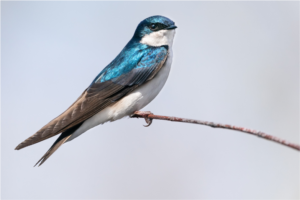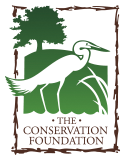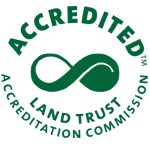Photo of Alvin Gates monitoring bluebird boxes
The Eastern bluebird is a species of thrush (related to robins) that loves open fields and grassy areas to catch and eat a variety of insects. They are cavity nesters, utilizing in old woodpecker holes in trees near open fields. With the change in agricultural practices several decades ago from farm pasturing (good habitat for bluebirds) to mostly corn and soybeans (row crops), and wooden fence posts, which woodpeckers would make holes in, being replaced with metal fence posts, the bluebird population plummeted. A national effort to build and install bluebird nesting boxes took hold and today there are literally hundreds of thousands of nesting boxes scattered around the country in appropriate habitats. Today, we have 21 such boxes at the McDonald Farm. Our wonderful bluebird volunteer MacKenzie Kaehler has summarized below the 2023 nesting season. Thank you MacKenzie!

Eastern bluebird
This bluebird season started in April of 2023. With a total of twenty one bird boxes throughout the property spanning from the outward edge of fields all the way to the bike trail more towards the street. From the colder times of the end of March to April, I started to notice some nests starting. I also noticed a lot of nests being abandoned.
Something that I learned very early on is that birds (bluebirds, chickadees, house sparrows, tree swallows, etc.) all will sometimes start a nest and may pick to abandon it at any point in time. There was a point in time when two bluebird families were nesting in what is considered a bird “condo” as there is another bird box attached directly behind it. These boxes were occupied by these families for about two weeks and then the bluebirds abandoned the boxes out of the blue. This could be for many reasons, however, these boxes are closer to the pond and, thus, the area may be better suited for tree swallows (they like to be near water). The non-native and invasive house sparrows were very persistent this year. House sparrows tend to like to be near humans and buildings, so it makes sense that this year they occupied the outer ring of the bird boxes. The four boxes closest to the bike trail consistently had house sparrows in them. While I found there were a lot of tree swallows thriving in the boxes closest to the water, bluebirds tended to love the boxes closest to the open field.
Roughly this year, I would say we had four to five house sparrows that were kept from reproducing to the best of our ability. We had a house wren briefly, but they decided to leave the box before completing the nest. This is known because there was the starting of a nest with just twigs, a key characteristic within a house wren’s nest. Tree swallows were a majority of the bird population this season with at least seven of the boxes being typically occupied by them. Thus, they produced at least three to four babies for each of those boxes. Bluebirds accounted for around five boxes on average throughout the season. Therefore, we had around twenty baby bluebirds this season. No Chickadees were found this year, this is known because there was also no moss found within any of the nesting boxes at any point in time throughout the season.
Overall, this was a very successful season mostly for the tree swallows. Next year, there are a couple boxes that will need some repairs and changes in location in order to try to make it more conducive to the bluebirds. The hope for the following year is to keep increasing the number of bluebirds that are in the area. However, this does not mean that chickadees, tree swallows, and house wrens are not welcome. House sparrows are not welcome as they pose a huge threat to all of the native bird species previously mentioned and are known to kill native birds and destroy eggs.

Eastern bluebird on nesting box

Tree swallow, a welcomed guest at the farm

European house sparrow, an “unwelcomed guest”



